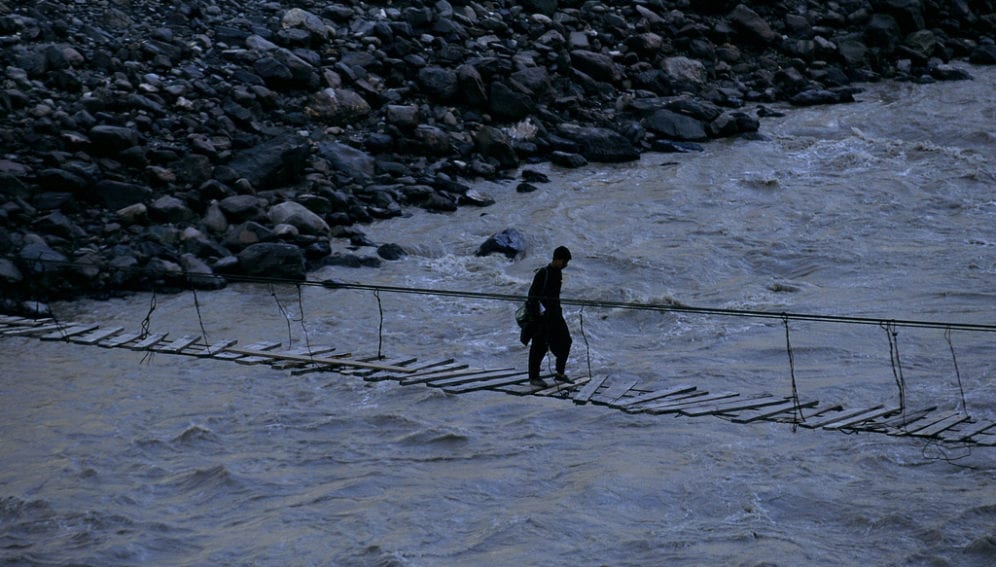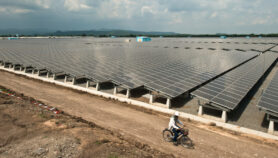By: Shafqat Kakakhel
Send to a friend
The details you provide on this page will not be used to send unsolicited email, and will not be sold to a 3rd party. See privacy policy.
Shoring up the Indus Waters Treaty can help India and Pakistan better manage shared water resources, says Shafqat Kakakhel.
It is instructive to remind ourselves that the Indus Waters Treaty (IWT) signed in September 1960 may not be ideal. However, it offers a feasible framework for resolving water disputes between India and Pakistan. The Treaty neither upheld India’s claim of “proprietary rights” over the rivers passing through its territories nor Pakistan’s demand for the restoration of the pre-Partition status quo — an unhindered access to the waters of the six rivers of the Indus Basin on which its dependence was total and critical. Instead and contrary to the vision motivating the World Bank to play its indispensable role in facilitating both the negotiation and implementation of the agreement, the IWT was predicated less on collaboration for the optimum development of the Indus Basin resources and more on dividing its main six rivers between the upper and lower riparian areas.
The three eastern rivers (Ravi, Sutlej, and Beas) were given to India for nearly exclusive use whilst the three western rivers (Indus, Chenab and Jhelum) were allocated to Pakistan. However, stringent conditions prescribed by the IWT and its detailed annexures allowed India to use the waters of the western rivers for irrigation, non-consumptive storage and hydropower generation.
India and Pakistan, supported by the international community, should try to strengthen the implementation of the IWT as well as probe avenues of mutually beneficial cooperation. The countries should work towards a more prudent management of the rapidly depleting water assets in the Indus Basin in order to address the looming water crises faced by both.
Provocative comments by extremist elements in both countries notwithstanding, the IWT enjoys the support of governments, experts and civil society within and outside the subcontinent. Several friendly governments and non-governmental organisations have promoted the so-called Track II dialogues enabling Indian, Pakistani and Kashmiri stakeholders to identify areas of possible cooperation on water issues. Such initiatives are especially commendable in view of the long spells of hiatus in Indo-Pak official dialogue.
India and Pakistan should try to grapple with three clusters of water-related issues: energising the dispute settlement mechanisms of the IWT, identifying possibilities of cooperation on issues omitted in the Treaty — either because they were not seen as urgent or whose salience has been recognised only recently — and broader cooperation on integrated stewardship of the water assets.
Recurring hiccups have marked the implementation of one of the major elements of the IWT — the construction of Indian hydropower projects on the western rivers. Driven by its misgivings regarding the cumulative impacts of the scores of Indian projects on the western rivers, Pakistan has raised objections on the designs of most of the Indian projects. Pakistan fears that the projects would enable India to manipulate the flows of the western rivers in a manner that could harm its agriculture and the livelihoods of its people.
So far only one dispute has been resolved through bilateral talks. Disputes over two major Indian projects — Baglihar and Kishanganga hydroelectric plants — had to be submitted for third party adjudication. At present the Permanent Indus Commission is considering Pakistan’s objections to nearly a dozen Indian projects.
India and Pakistan should revisit the role and modalities of the functioning of the Permanent Indus Commission and evolve a detailed manual on the procedures of project approval and the technical details.
Some retired officials and diplomats propose setting up a permanent panel of experts selected and possibly funded by the UN and/or the World Bank/ Asian Development Bank to deal with different disputes, which could not be settled by the Permanent Indus Commission. The rationale for this additional mechanism is the overall unsatisfactory state of Indo-Pak relations and lack of mutual trust that have paralyzed the Commission.
Some experts are of the view that India should seriously consider investing in hydropower projects in Nepal to meet its current and future energy needs. This will reduce the number of hydropower projects on the western rivers — a win-win solution that would also respond to the growing criticism of dams inside India.
The issues that deserve serious attention but are not covered by the IWT include some which were identified by Indo-Pak Track II dialogues:
- Understanding the multifaceted effects of climate change and ways to reduce their negative consequences. This includes the behaviours of the glaciers feeding the Indus Basin and monsoon wind patterns and disaster management impacts of extreme events such as floods and droughts
- Collection and sharing of relevant hydrological and meteorological data and modelling
- Monitoring of the shortages in river water and ways to address them during dry years
- Watershed management and quality of water affected by industrial and agricultural runoff
- Rapid depletion of aquifers and their likely impact on river flows
- Cooperation in development of crop and plant varieties better suited to cope with higher temperatures
- Exchange of best practices on maintenance of water infrastructure and water governance
The Track II dialogues have suggested a number of topics to be jointly studied and researched by experts from both countries in order to build up a robust knowledge for decision-making on water issues, especially those related to climate change.
The way ahead
Given the urgency of addressing growing water-related challenges the governments of India and Pakistan need to initiate discussions on water-related cooperation at both bilateral level as well as in the framework of South Asian and global strategies and mechanisms.
At the bilateral level, the existing options for high-level discussions are the Composite Dialogue (2003-2008), which made some progress in evolving a number of confidence building measures concerning security, trade and people-to-people contacts. Its agenda included discussions on the Wullar Barrage and the Tulbul Navigation Project and the joint ministerial commission established in 2004, with working groups that deal with eight subjects including agriculture and the environment.
Pending a breakthrough, in what has been described as a ‘mutually hurting stalemate’ in the bilateral high-level dialogue, civil society, including the science and development communities could continue to promote enhanced understanding and awareness of the urgency in addressing the burgeoning water-related crises in South Asia.
Shafqat Kakakhel, former deputy director of the UNEP, now serves as chairperson of the Sustainable Development Policy Institute and co-chairs the Climate Change Network-South Asia. He uses his background as diplomat to promote cooperation between India and Pakistan on water and environmental issues.
This article has been produced by SciDev.Net's South Asia desk.














